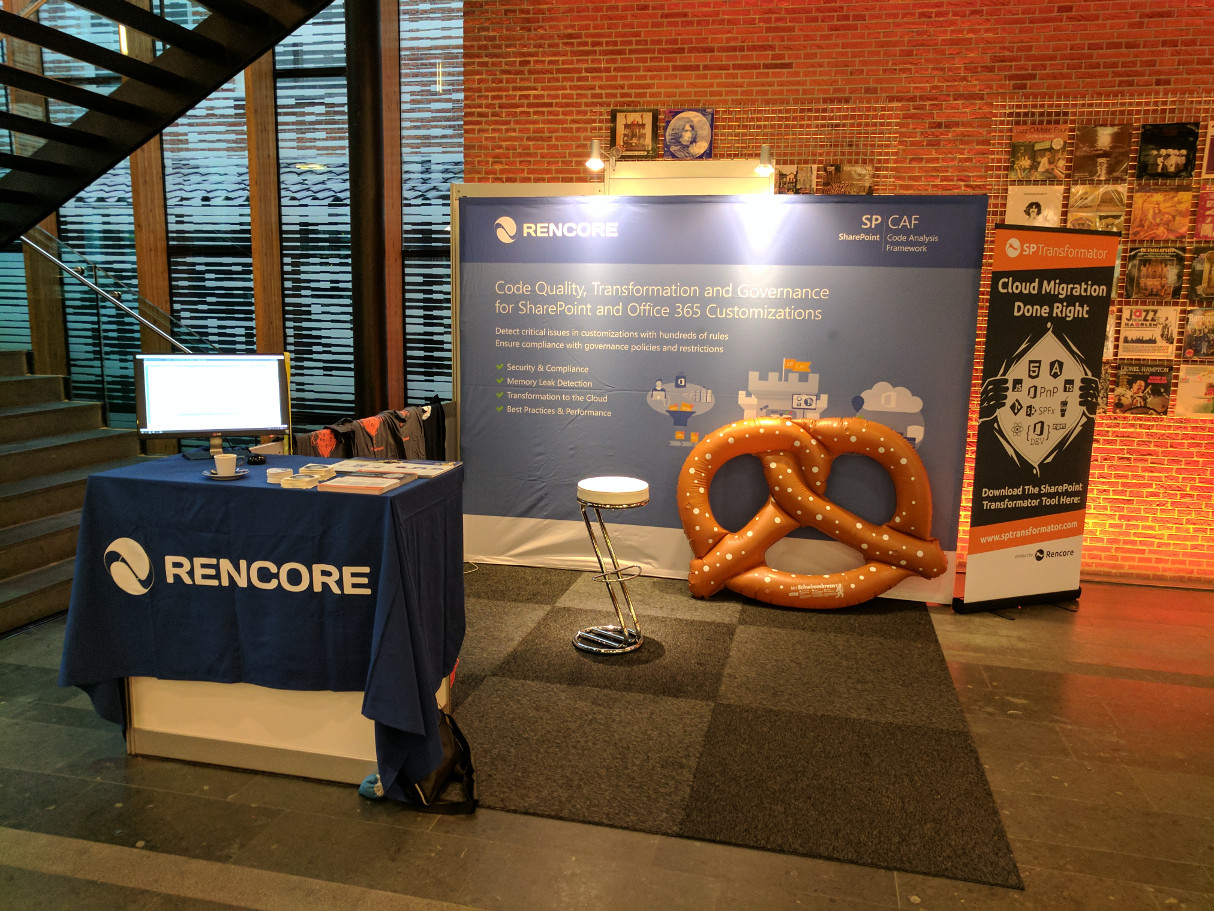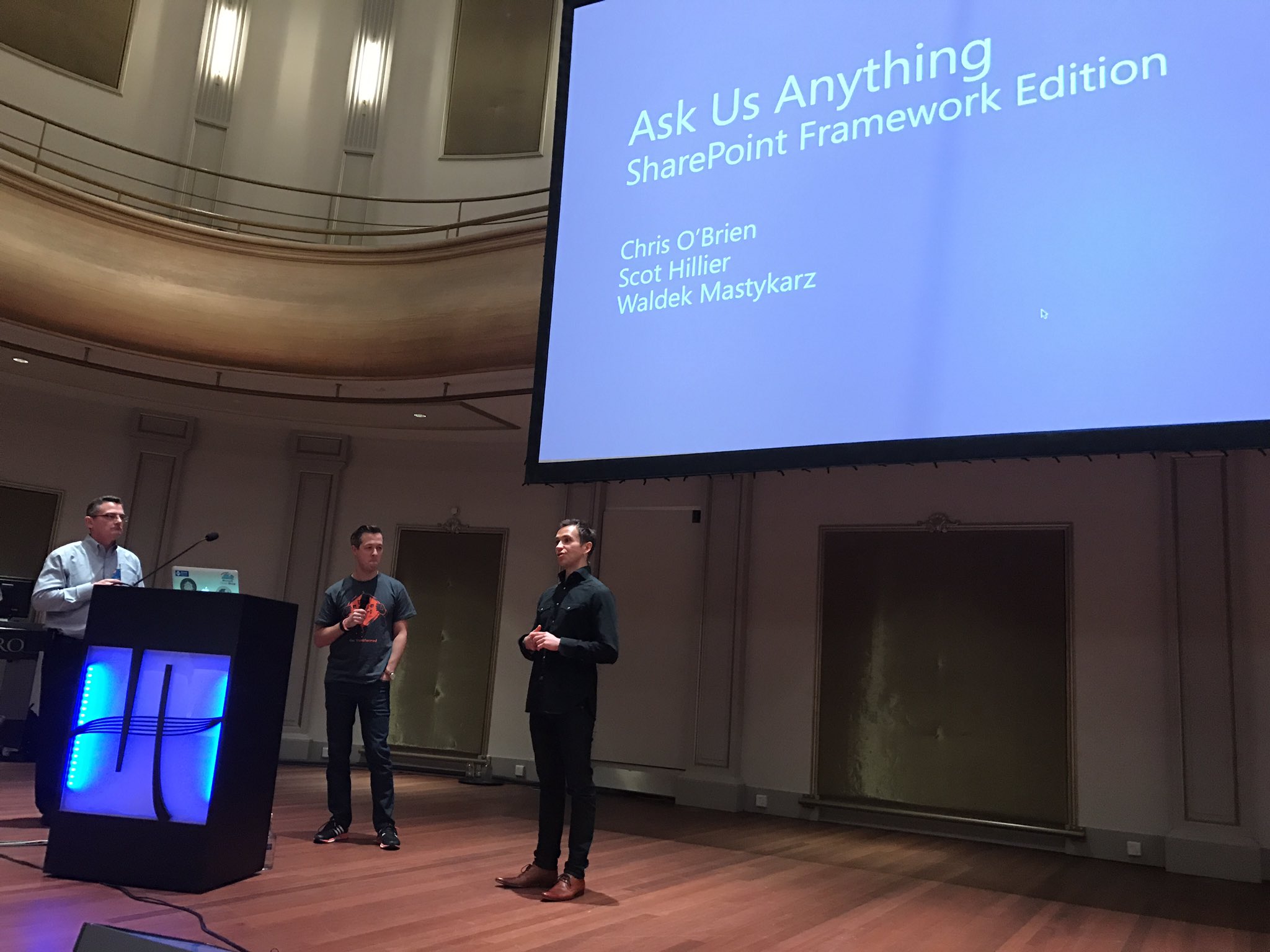
Unity Connect 2016 presentation slides available
At the recent Unity Connect 2016 I had the pleasure of presenting a session about building productivity solutions using the Microsoft Graph. Here are the presentation slides that I used.
Ask Us Anything - SharePoint Framework Edition
Due to a change in the schedule, fellow MVPs Chris O’Brien and Scot Hillier and I organized an impromptu session about the new SharePoint Framework. During the session we had an open discussion with the audience regarding the new SharePoint Framework.
We started by asking the audience if they have already tried the new SharePoint Framework and if so, how they felt about it. SharePoint Framework is still relatively new and the majority didn’t have a chance to try it yet. Most of the developers who did try it, were positive although they were wondering when they would get better support from Visual Studio for building SharePoint Framework projects.
Nearly everybody in the audience have had previous experience with building client-side solutions. The majority worked with Angular. A few developers used Knockout and there were a few developers who used jQuery and React as well.
SharePoint Framework introduces a new toolchain based on open-source tools. The audience was divided in two camps: some of them felt that using what they already knew, could start building SharePoint Framework solutions right away. The other group had the feeling that they had quite a lot to learn having experience with the previous SharePoint development models.
During the session we discussed a variety of other topics as well ranging from security and enterprise development to the future of server-side development and support for ISVs.
The session was well-received and we got some great feedback from the attendees who found this format very helpful.
Building Productivity Solutions with Microsoft Graph
Using Microsoft Graph you can access data and insights from the Microsoft cloud. In this session, you will learn how you can leverage Microsoft Graph to build productivity solutions for your organization. We will talk about the authentication flow, the different endpoints and tips and tricks when working with this powerful API.
I started the session with a demo of a few solutions built using the Microsoft Graph: an Outlook add-in that you can use to upload an e-mail attachment to a Group and a highly-branded organization portal.
Next, we discussed what the Microsoft Graph is, which resources it exposes, how it works and what you can build with it. With the recent announcements at Ignite 2016 the Microsoft Graph spans information stored online and on-premises. While the on-premises support is currently limited to Exchange it’s a great first step toward exposing information and insights from all location in a single endpoint. Also the Microsoft Graph supports retrieving SharePoint files and list items which simplifies building reusable solutions that run across a number of different tenants.
Microsoft Graph is secured with Azure Active Directory and uses OAuth for authorization. Different kinds of solutions require different flows. With the increasing popularity of client-side solutions, I focused on the OAuth implicit flow. I illustrated how it works using the Quick Contacts sample app.
ADAL JS is a library provided by Microsoft that simplifies implementing the OAuth implicit flow in client-side solutions. Particularly if you’re using Angular v1.x, ADAL JS makes it very easy for you to connect your application to the Microsoft Graph. There are however some limitation related to using ADAL JS with Internet Explorer, which we discussed next.
I finished the presentation by showing a demo of a SharePoint Framework web part built using React connected to the Microsoft Graph. Using this demo we discussed the considerations of connecting to Microsoft Graph from SharePoint Framework web parts.
Here are the presentation slides I used in this session.
Get transformed
Just before Unity Connect 2016 we launched a new solution at Rencore called SPTransformator. Using SPTransformator organizations can easily transform their existing SharePoint customizations to use one of the cloud-ready development models.
There are many great solutions for migrating SharePoint content. Until recently however, migrating existing customizations was possible only through manual effort. SPTransformator changes this, offering you customization migration guidance, helping you track the progress of your migration effort and finally transforming your customizations to one of the cloud-ready SharePoint customization models.
We had a great reception of SPTransformator at Unity Connect and attendees were very keen to experience first-hand the benefits it would offer them in their next SharePoint migration project.

The event
Once again Unity Connect 2016 was an extremely well-organized event. The content team lined up some of the most renown speakers in the SharePoint community and it was an absolute honor to be a part of it. I’d like to thank the organization and all sponsors for making the event possible, as well as everyone who attended my sessions - I hope you found them useful and please don’t hesitate to reach out if you have any questions.
